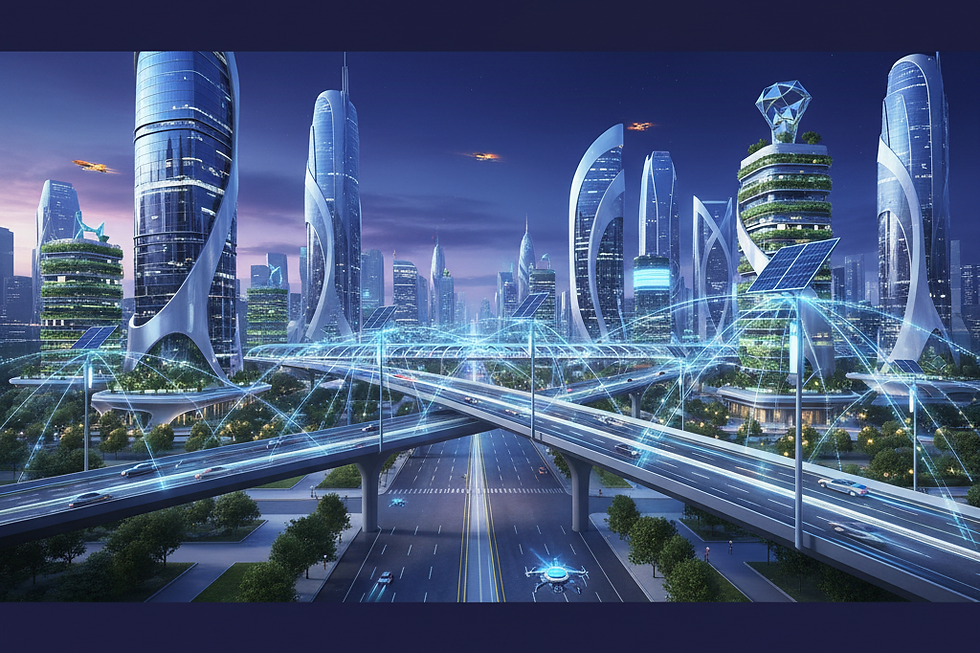Beyond the Factory Floor: How China is Redefining the Solar Street Light Market for Emerging Economies in 2025
- coco wang
- 9月22日
- 讀畢需時 6 分鐘
Beyond the Factory Floor: How China is Redefining the Solar Street Light Market for Emerging Economies in 2025

For project managers in Africa, municipal officers in Southeast Asia, and NGO coordinators working to bridge the energy gap, the conversation around solar street lighting often begins and ends with one word: China. But to view this influence solely through the lens of 'low cost' is to miss the most profound transformation happening in global infrastructure today. It's a strategic miscalculation that could leave your project behind.
The narrative is no longer just about price competition. It's about a sophisticated, rapidly evolving ecosystem that is fundamentally reshaping what's possible for off-grid and municipal lighting in developing regions. This isn't just manufacturing; it's the new architecture of global access to light.
This article moves beyond the surface-level discussion. We will dissect the multi-layered dynamics of China's role in the solar lighting system, providing a strategic framework for procurement professionals, distributors, and project leaders to navigate this landscape and make decisions that ensure long-term value, reliability, and impact.
The Engine Room: Deconstructing China's Unmatched Supply Chain Advantage

Understanding the ?why? behind China?s market position is critical to leveraging it effectively. The advantage is not accidental; it's a deeply integrated system built for scale, speed, and control, which translates into tangible benefits for global buyers.
From Raw Silicon to Smart Controller: The Power of Vertical IntegrationThe term 'supply chain' barely does it justice. China's dominance is rooted in its control over nearly every node of the value chain. This includes polysilicon production, wafer and cell manufacturing, battery cell fabrication (especially LiFePO4), LED chip packaging, and controller programming. For a project manager or engineer, this vertical integration means less supply chain volatility and a more predictable path from order to delivery. More importantly, it allows for deep system optimization, where the solar panel's output, the MPPT controller's efficiency, and the battery's discharge curve are designed in harmony, not just assembled from disparate parts.
The "Shenzhen Speed" of Innovation: Rapid Iteration Meets Market NeedsUnlike the slower, more rigid product development cycles seen elsewhere, the Chinese solar street light industry operates with incredible agility. Feedback from a dusty construction site in Nigeria or a humid coastal road in the Philippines can be integrated into a new product design in months, not years. This results in highly adaptive products: think integrated solar street lights with enhanced IP66/IK08 ratings for harsh environments, specialized optical lenses for rural single-lane roads, or intelligent dimming schedules pre-programmed for local security needs. For distributors, this means access to a constantly evolving portfolio that directly addresses their customers' pain points.
Economies of Scale as a Strategic Weapon: Making Light a Utility, Not a LuxuryThe sheer volume of production is staggering. This massive scale creates a virtuous cycle: it drives down the per-unit cost of high-quality components like Bridgelux LED chips or CATL battery cells, making professional-grade commercial solar lights accessible for budgets that were previously prohibitive. For a municipal procurement officer, this means a budget that could once only cover 5 kilometers of road lighting can now potentially cover 7 or 8 kilometers, dramatically increasing the ROI for taxpayers and the social impact of the project.
More Than Just Price: The Evolving Value Proposition for Emerging Markets

As the market matures, the most successful Chinese solar street light manufacturers are shifting the conversation from cost-per-unit to lifetime value. This involves directly addressing the unique technical, logistical, and reliability challenges faced by projects in developing nations.
The "Fit-for-Purpose" Revolution: Customization Over StandardizationThe era of a one-size-fits-all solar light is over. Leading suppliers now act as solution architects. Instead of just selling a product, they engage in a dialogue about the project's specific needs. For an NGO coordinator, this could mean specifying a system with a larger battery bank to guarantee 5 nights of autonomy during a monsoon season, or a luminaire with a lower color temperature (e.g., 3000K) to minimize impact on local wildlife. This consultative approach ensures the final off-grid street lighting solution is not just installed, but is truly effective and sustainable in its specific context.
Solving the Reliability Puzzle: Navigating Quality TiersThe biggest risk in sourcing from any large market is quality inconsistency. The strategic shift here is the emergence of clear quality tiers. Top-tier manufacturers are now building their reputations on transparency and component branding. As a buyer, you must demand this clarity. Ask the critical questions: Is the battery new, A-grade LiFePO4, or recycled NMC? Is the controller a genuine MPPT or a less efficient PWM? A reputable solar street light manufacturer will provide detailed datasheets, third-party certifications (like CB and ENEC), and a comprehensive warranty that covers performance metrics like lumen depreciation and battery capacity retention, not just functional failure.
Logistical Mastery: Conquering the "Last Mile" ChallengeA perfectly engineered light is useless if it arrives damaged or is too complex to install in a remote village with limited tools and expertise. Chinese manufacturers have become masters of logistical design. This is evident in the prevalence of highly integrated, all-in-one designs that are more compact and robust for shipping. Packaging is reinforced, and installation is simplified to a 'plug-and-play' process. This focus on the entire deployment journey is a critical, often overlooked, value-add that saves project managers significant time, money, and headaches on-site.
The 2025 Horizon: Strategic Shifts Shaping the Future of Global Lighting

Looking ahead, the leading Chinese solar light companies are not resting on their manufacturing laurels. They are investing in technology and business models that will define the next generation of municipal and commercial solar lights.
Beyond Illumination: The Pivot to IoT and Smart City InfrastructureThe most forward-thinking manufacturers are embedding intelligence into their systems. This means solar street lights that can be remotely monitored and controlled, report their own faults, and adjust their brightness based on real-time motion detection. For municipal solar street lights in a growing city, this is a game-changer. The light pole transforms from a simple utility into a node on a smart city grid, capable of hosting sensors for environmental monitoring or public Wi-Fi access, creating immense future value from the initial investment.
The Green Imperative: Championing the Circular EconomyAs global clients, particularly from government and NGOs, place a higher emphasis on ESG (Environmental, Social, Governance) criteria, the industry is responding. This includes the widespread adoption of LiFePO4 batteries, which not only last longer (reducing replacement cycles) but also avoid the use of cobalt, a mineral fraught with ethical sourcing concerns. Furthermore, designs are becoming more modular, allowing for easier repair and replacement of individual components like the battery pack or LED module, extending the product's life and reducing waste.
From OEM to Global Partner: Building Local Support NetworksThe final strategic evolution is the move away from a purely transactional, factory-direct model. Leading companies understand that long-term success, especially for commercial and municipal projects, requires local presence. They are actively building networks of in-country distributors and technical partners. For a contractor, this means access to local training, readily available spare parts, and responsive support, dramatically de-risking the investment and ensuring the long-term success of the lighting project.
Conclusion: A New Paradigm for Procurement
The influence of China's solar street light industry on emerging economies is undeniable and accelerating. However, the nature of this influence has fundamentally changed. It has matured from a simple story of low-cost manufacturing to a complex narrative of integrated supply chains, rapid innovation, and a strategic pivot towards long-term, sustainable value.
For the discerning project manager, distributor, or procurement officer, the task is no longer to simply find the cheapest price. The new mandate is to identify the partners within this ecosystem who are leading the charge in reliability, fit-for-purpose design, and future-ready technology. By understanding these deeper currents, you can harness the full power of this global engine to deliver lighting projects that are not only cost-effective but truly transformative.
Ready to Navigate the Future of Global Solar Lighting?
Don't just source a product; secure a future-proof solution for your community. Connect with the experts at nfsolar to discuss how these global trends can be tailored to your specific project needs.
Contact us for a complimentary Project Consultation or for Product Inquiries:
Website: www.nfsolar.net
Email: cocowang@novafuture.net
WhatsApp: +8613013537907



留言